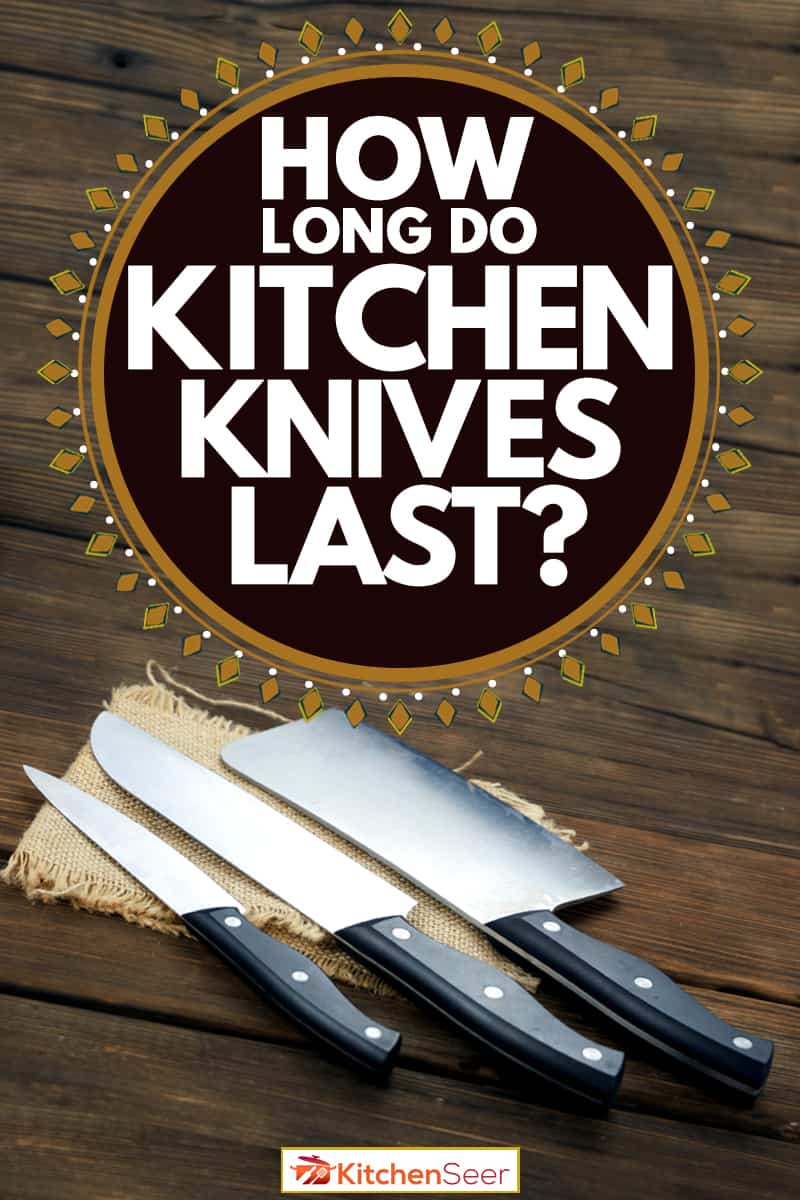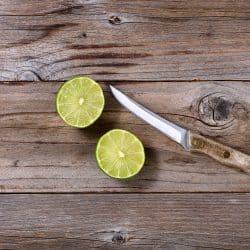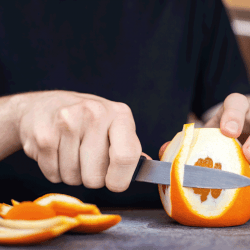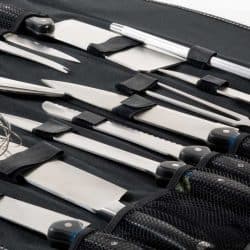We have all had that moment in the kitchen; you are trying to replicate a recipe, and the most fundamental tool, your knife, is not getting the job done. But, the blade is only a couple of years old. How long do kitchen knives last anyway? We found ourselves asking this very question, so we've researched the longevity of kitchen knives to get the answer for you.
How long a kitchen knife lasts depends on a few factors—the blade material, frequency of use, and how well it is maintained all play a role. However, if treated well, an average quality knife can last decades, if not a lifetime.
So, now you are wondering how to care for the knives in your kitchen. And, for those considering new cutlery, what material is best for the longevity of the blades? Keep reading, and we'll get you up to speed on knife maintenance and choosing the best option for a long-lasting kitchen knife.

What Three Knives Does Every Kitchen Need?
With many available options, it might seem as though you need a different knife for each task. The fact is, you can prepare and serve delicious recipes using only a few quality pieces of cutlery.
Chef's Knife
Some say this is the only knife you need in the kitchen because it can be used for all of your cutting needs. Chef's knives are 8 to 10 inches long, with a curved edge that allows for efficient chopping.
Click here to see this chef's knife by Wusthof on Amazon.
Serrated Knife
Most of us know this as a bread knife. But, the teeth on this type of blade are good for more than just slicing bread. Available in a variety of lengths, serrated knives are also ideal to use for cutting soft fruits and waxy surfaces.
Click here to see this serrated knife by Brandobay on Amazon.
Paring Knife
Paring knives are all about details, for cutting small foods decisively. Use a paring knife for soft fruits or hard, small produce like ginger and garlic. At 2 to 4 inches long, bypass using this knife on bulky things, like carrots or beets.
Click here to see this paring knife by Cuisinart on Amazon.
What Is The Best Material For Knives?
Depending on who you ask, the best material for knives will vary because, ultimately, it boils down to personal preference. Let's take a look at the pros and cons of various types of materials used for blades.
Carbon Steel
When taken care of properly, carbon steel knives last a lifetime. They are heavy duty and hold a sharp edge. The downside is that if not seasoned and cared for properly carbon steel can rust. These blades are also susceptible to breakdown over time from exposure to the acidity in some foods.
Stainless Steel
Stainless steel is currently the most common material used for blades. Robust stainless steel is resistant to pitting and staining caused by acidic foods and highly resistant to rust. Unfortunately, this metal doesn't stay sharp very long.
Ceramic
Ceramic blades seem to solve all the issues associated with metal counterparts. They don't rust, aren't affected by acidity, and maintain a sharp edge. Plus, ceramic is lightweight. However, ceramic is not an industry-standard because it can chip or shatter.
Why Is A Dishwasher Bad For Knives?
Proper care of your knife is essential to its lifespan. The soap used in dishwashers is so intense it can potentially corrode the blade material. Additionally, the agitation of the dishwasher can dull or chip the blade. Instead of using the dishwasher, immediately after you are finished preparing your meal, hand wash the knife. It is best not to leave the knife soaking in the sink or laid out on the drying rack. Instead, use a soft sponge, a gentle soap, and then thoroughly dry your knife.
Should You Oil Your Knife?
Oiling metal knives should be a part of your care routine, especially for carbon steel blades. Cooking oils, such as extra virgin olive oil, are recommended but do tend to leave a greasy build-up on knives.
Avoid oil build-up by using mineral grade oil instead. Thoroughly clean and dry the blade, then apply your choice of oil. Apply oil to knives as often as you like, but at least every few months.
How Should Your Knives Be Stored?
Tossing knives into a drawer with the rest of your kitchen utensils is a danger to both your fingers and knives. You are leaving the edge exposed to increase the risk of dents and chips in the blade. If your kitchen size or layout limits you from using a knife block or magnetic strip, opt to purchase a sheath or edge-guard with your knife to limit the damage inflicted from drawer storage.
Click here to see this 3-piece knife guard set on Amazon.
How Do Cutting Boards Affect Knives?
If you are practicing good maintenance on knives, but they seem to be getting worn, the culprit could be a cutting board. Using stainless steel, glass, ceramic, or stone cutting boards is harmful to blades. A blade does the best cutting on a surface with a little flexibility, such as wood or plastic.
Click here to see Faberware wooden cutting boards on Amazon.
How Often Should You Sharpen The Blade Of A Knife?
While sharpening your knife is important to care for the blade, surprisingly, too much sharpening is detrimental to the blade's longevity. Sharpening grinds away at the material over time. Sharpen too often or vigorously, and you will eat right into the thicker part of the knife, resulting in a thicker blade that can no longer achieve a fine edge.
Instead, use the honing tool that generally comes with the purchase of a knife block. This tool gets rid of tiny flaws and realigns the blade.
Click here to see this ceramic honing rod on Amazon.
How Do You Know It Is Time To Replace Your Chef's Knife?
First and foremost, if your knife isn't comfortable to use, it isn't doing you any favors in the kitchen. Inspect the blade and handle of an uncomfortable knife. Fixing small knicks in the blade is possible, but large chips or a bent or broken tip are irreversible damage that requires replacement. If the rivets (the metal pieces that hold the handle to the blade) are loose or the handle has chipped or come off altogether, its time to replace the knife.
In Conclusion
No matter what you spend on a knife or set of knives, the time taken to properly care for knives could result in knives potentially lasting a lifetime in your kitchen. Whether carbon steel, stainless steel, or ceramic blades make sure to wash and dry knives promptly and store properly in a rack or sheath. Add honing, oiling, and appropriate sharpening, and your knife will last in the kitchen as long as you do.
If you found this post helpful, please read our other blogs to learn even more about types of knives and utensils for your kitchen:
Why Is There A Hole In A Cheese Knife?
Kitchen Utensils: The Ultimate List [Do You Know All 56?]








![Kitchen knife with black handle on wooden board made of beech. What Can You Cut With A Paring Knife [How About Meat]](https://kitchenseer.com/wp-content/uploads/2021/09/Kitchen-knife-with-black-handle-on-wooden-board-made-of-beech.-What-Can-You-Cut-With-A-Paring-Knife-How-About-Meat-250x250.png)



![set of cheese knives on a round wooden board. 14 Types Of Cheese Knives [Inc. What Cheese They're Good For And Why]](https://kitchenseer.com/wp-content/uploads/2021/07/set-of-cheese-knives-on-a-round-wooden-board.-14-Types-Of-Cheese-Knives-Inc.-What-Cheese-Theyre-Good-For-And-Why-250x250.png)